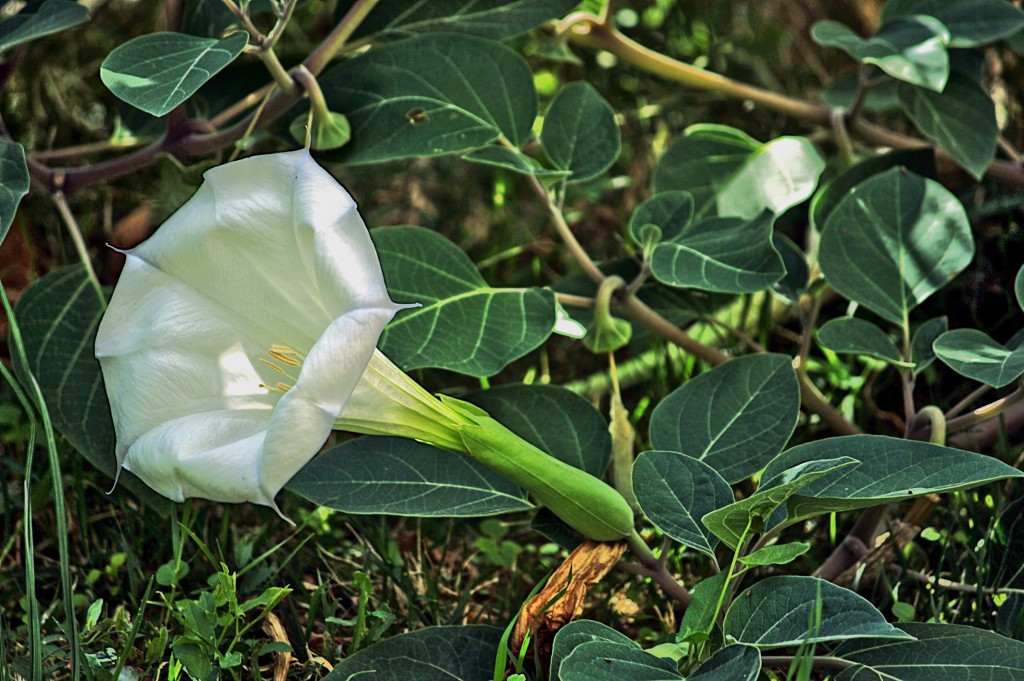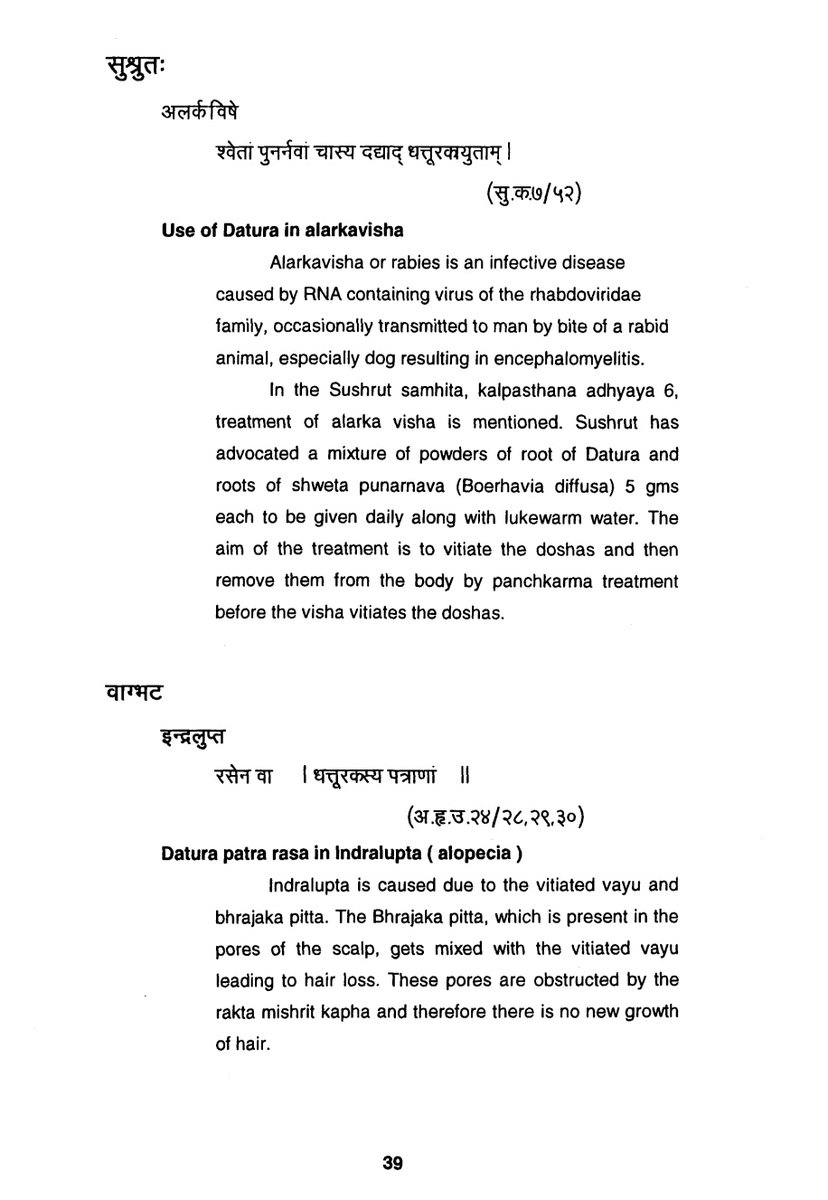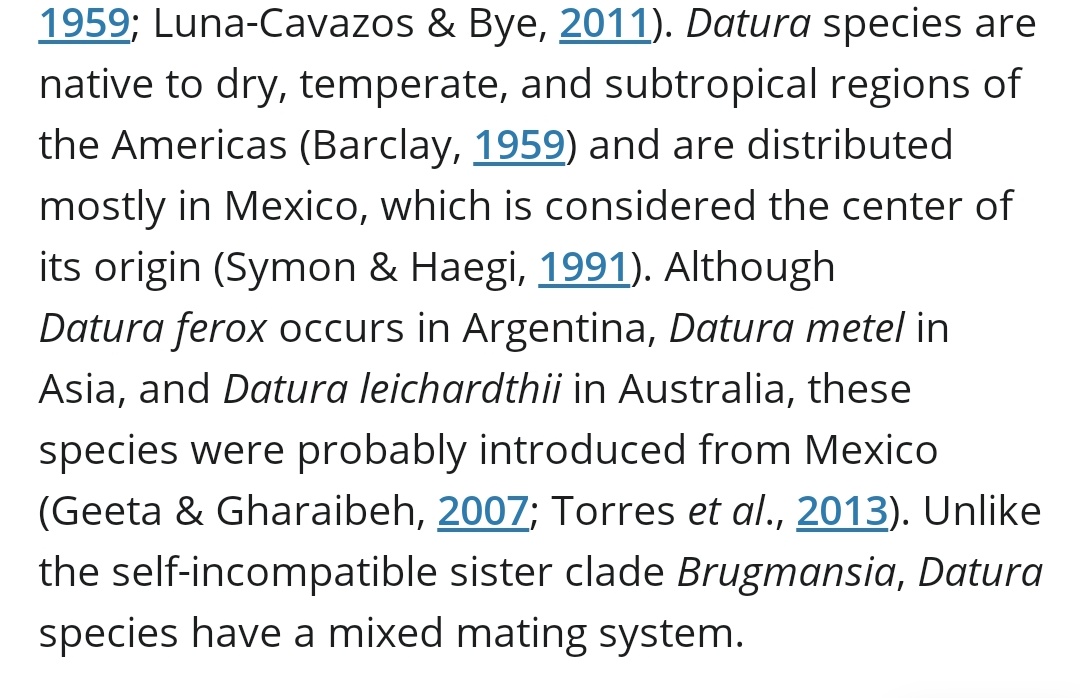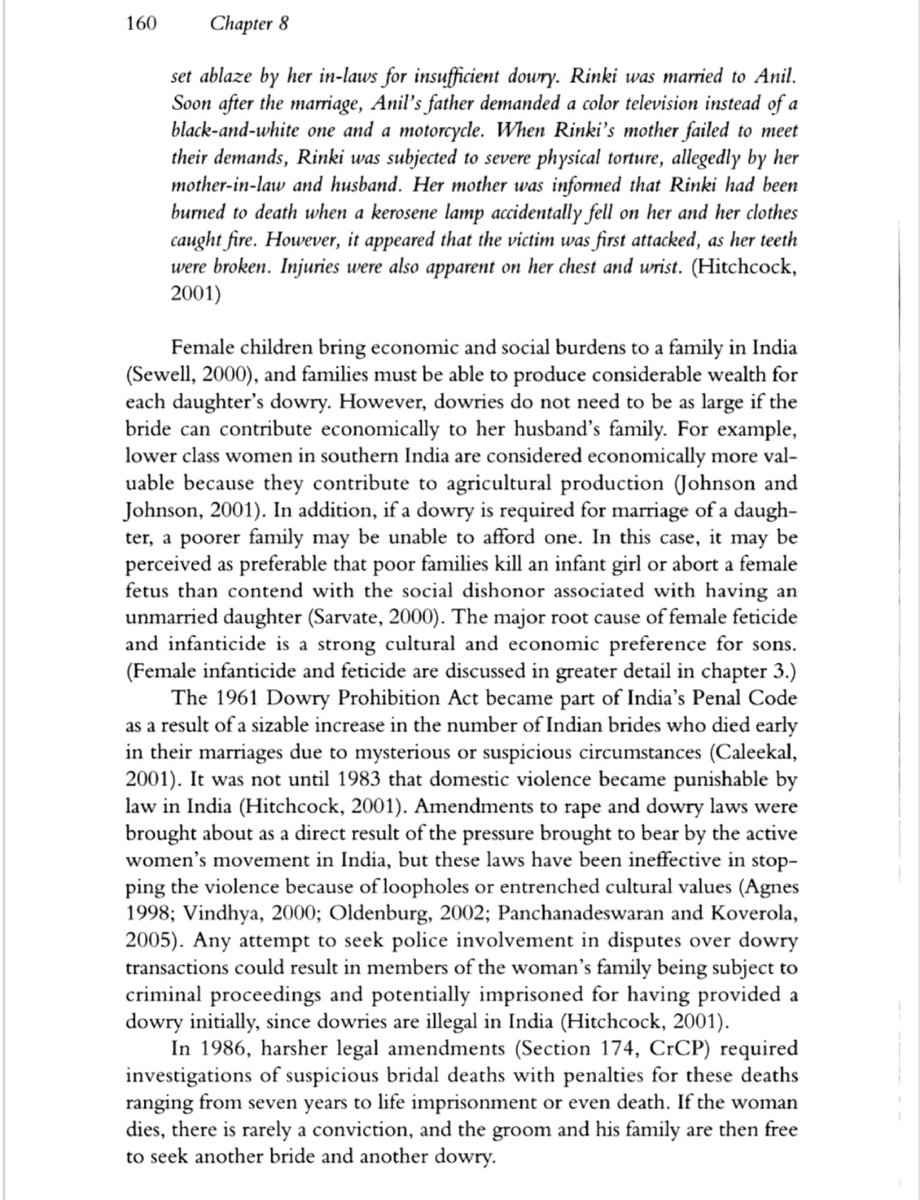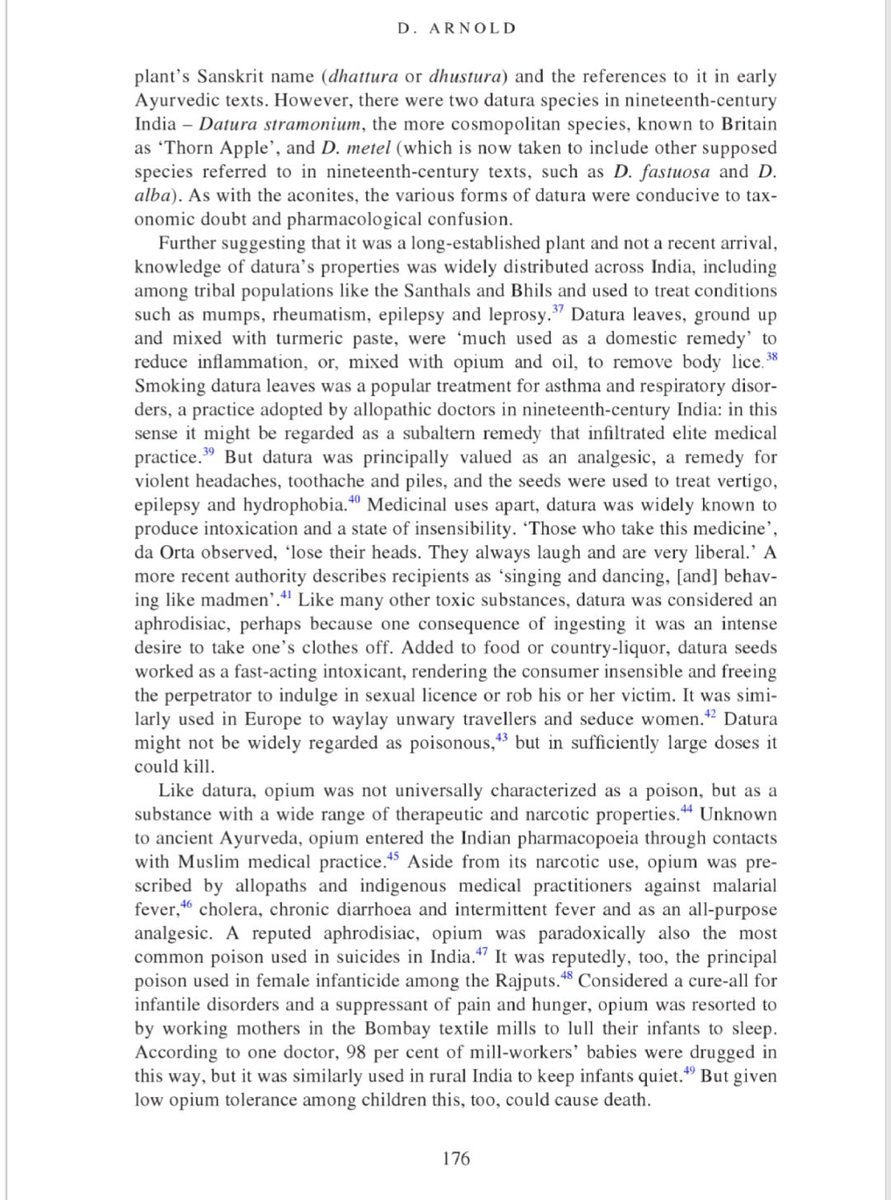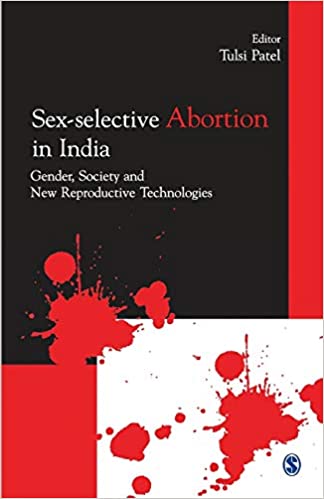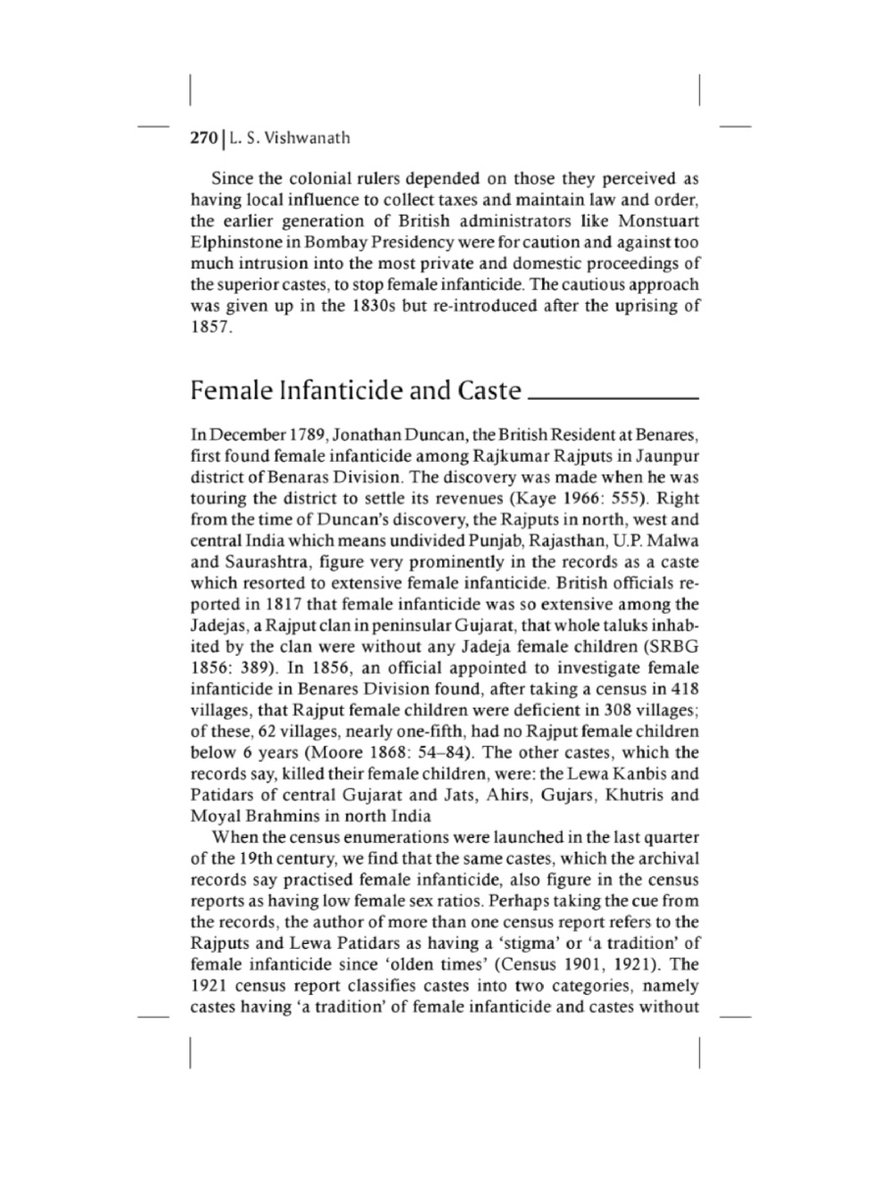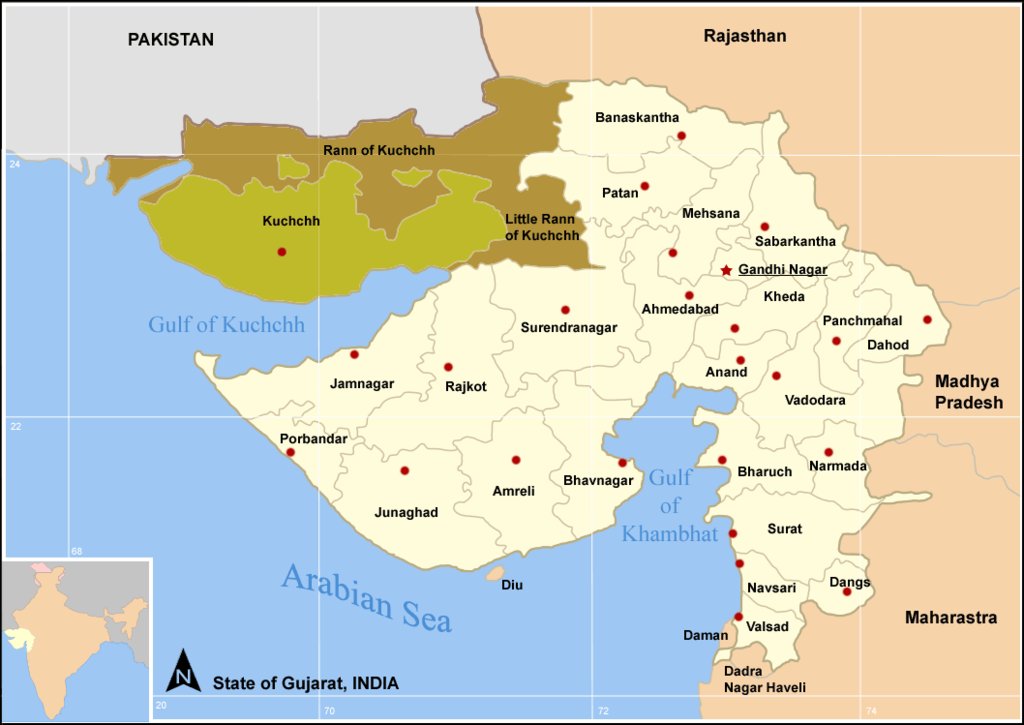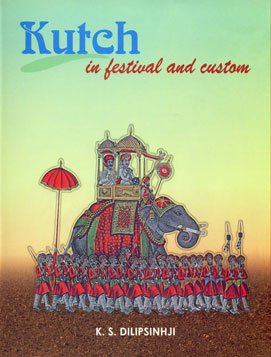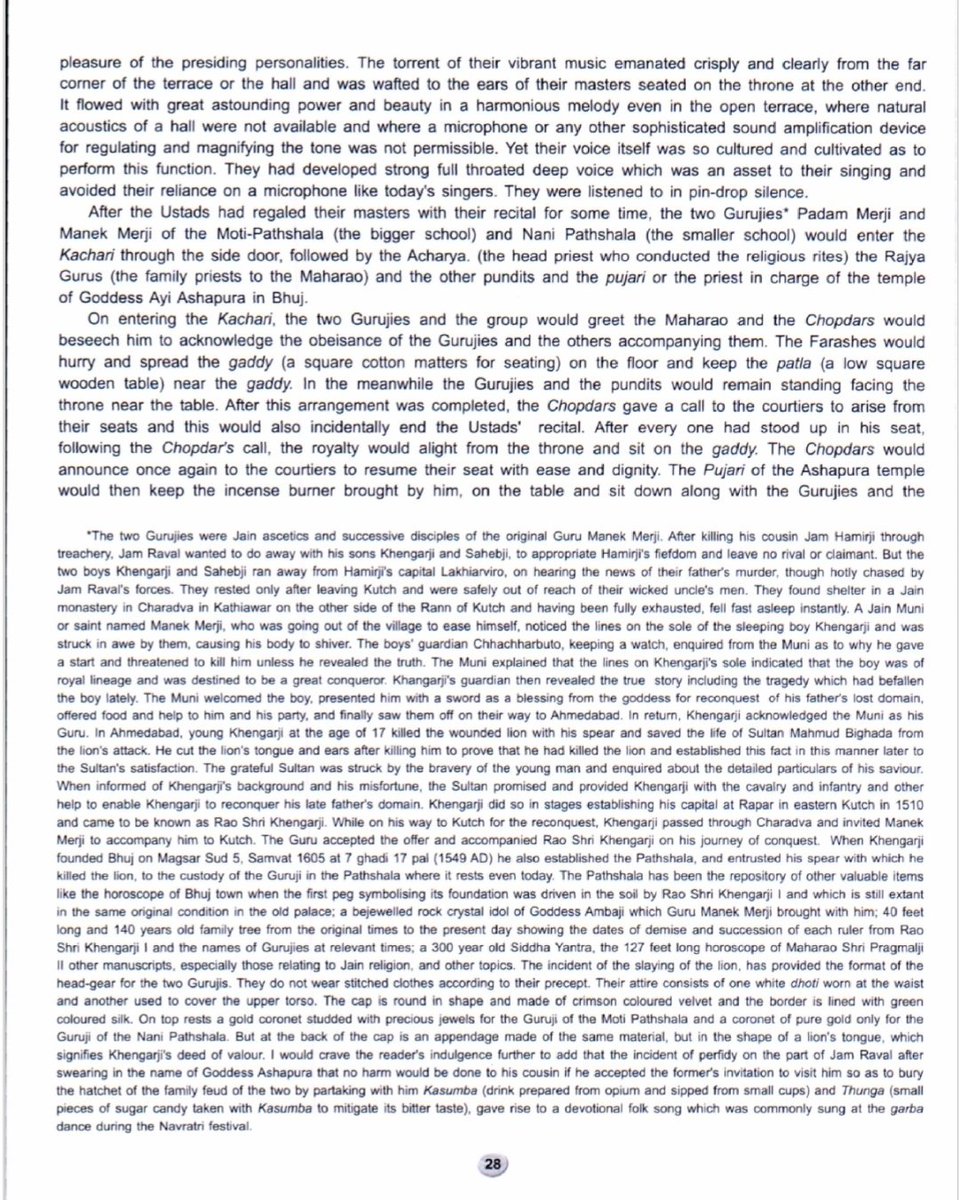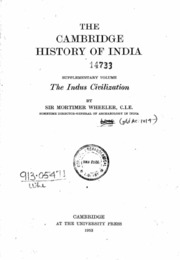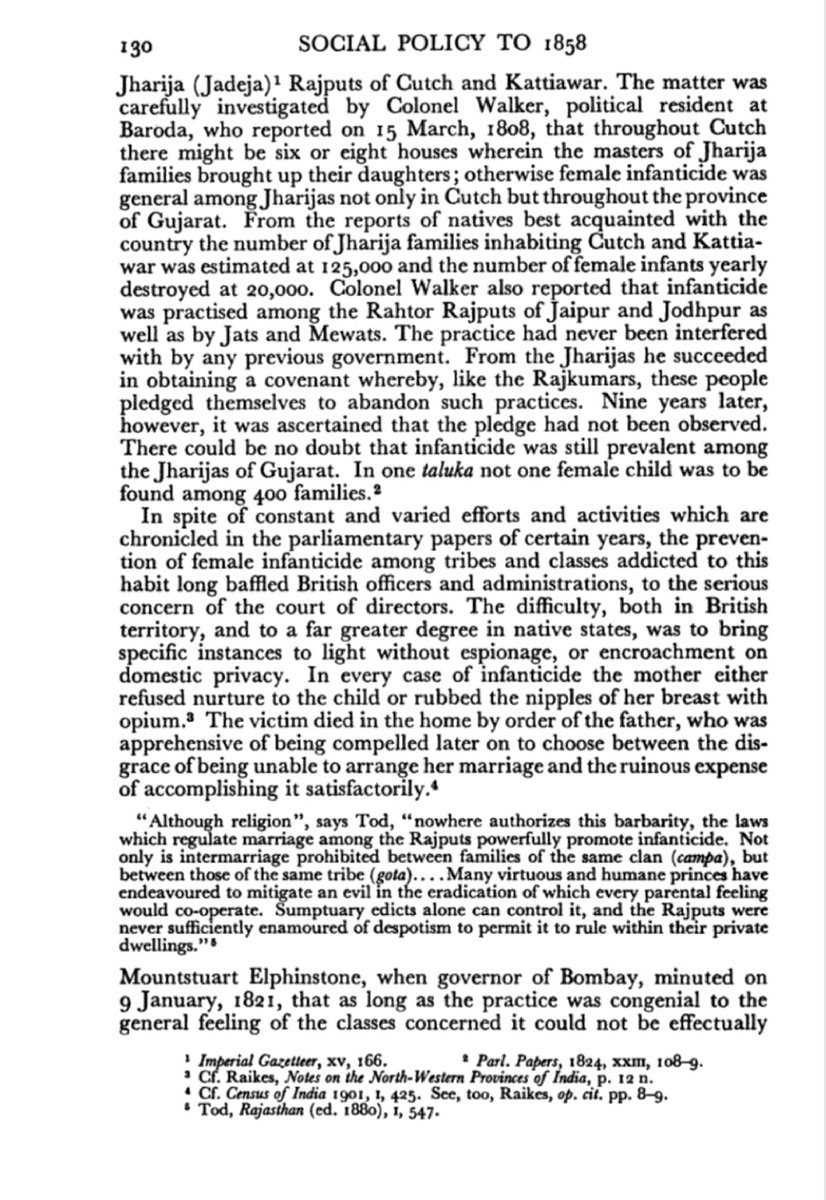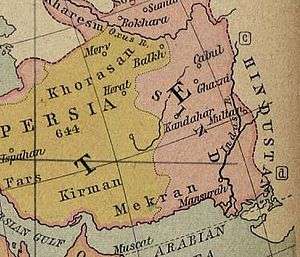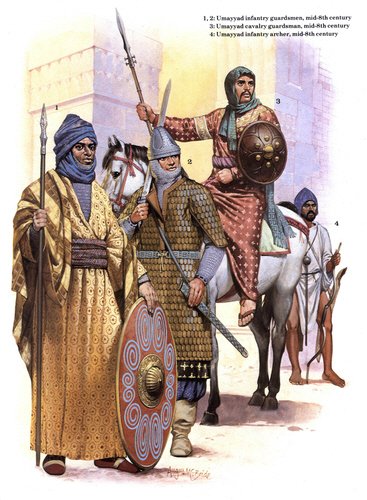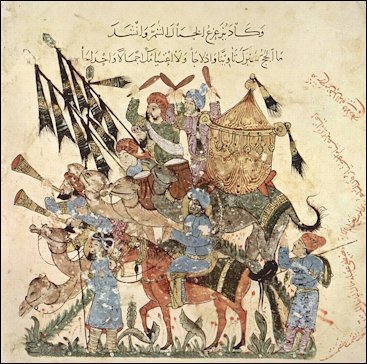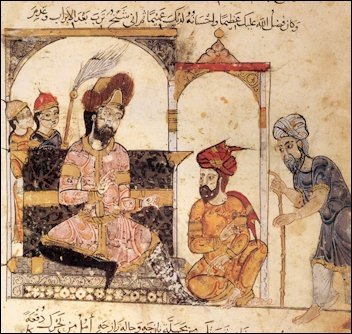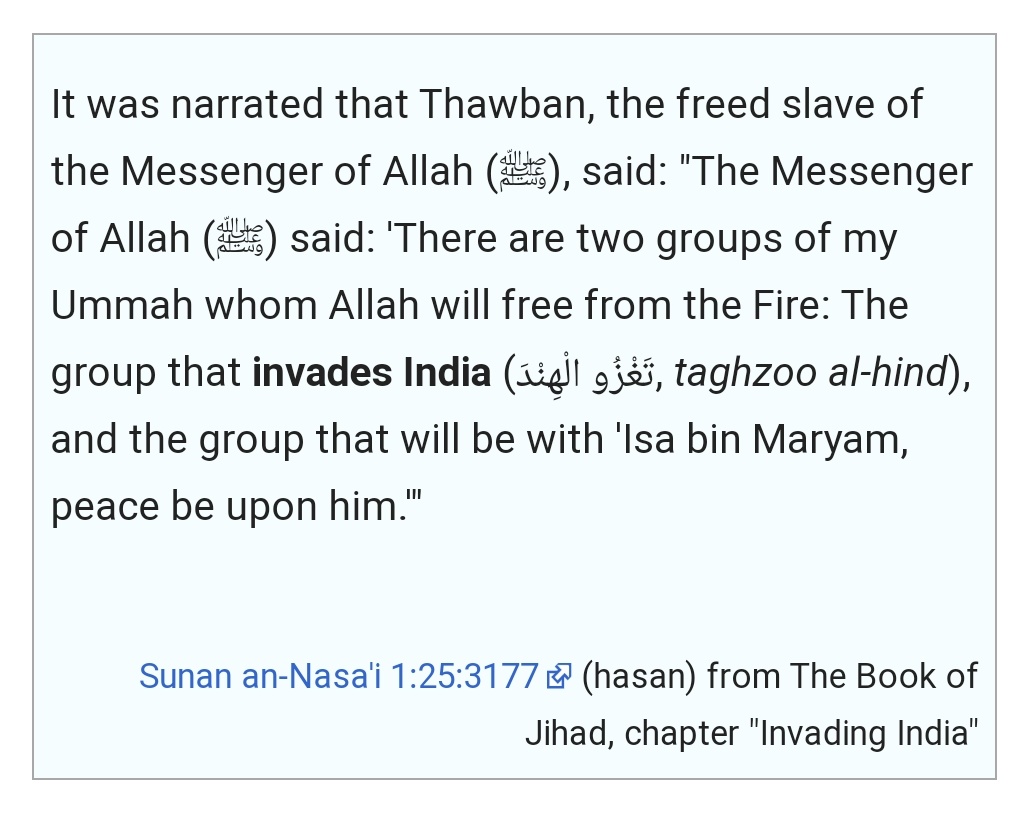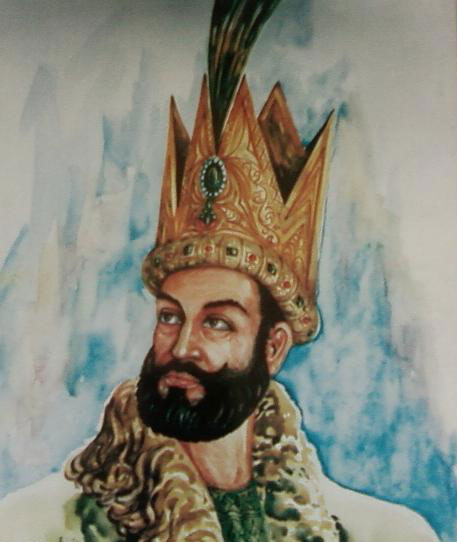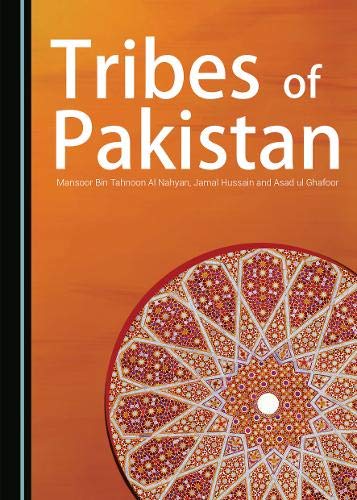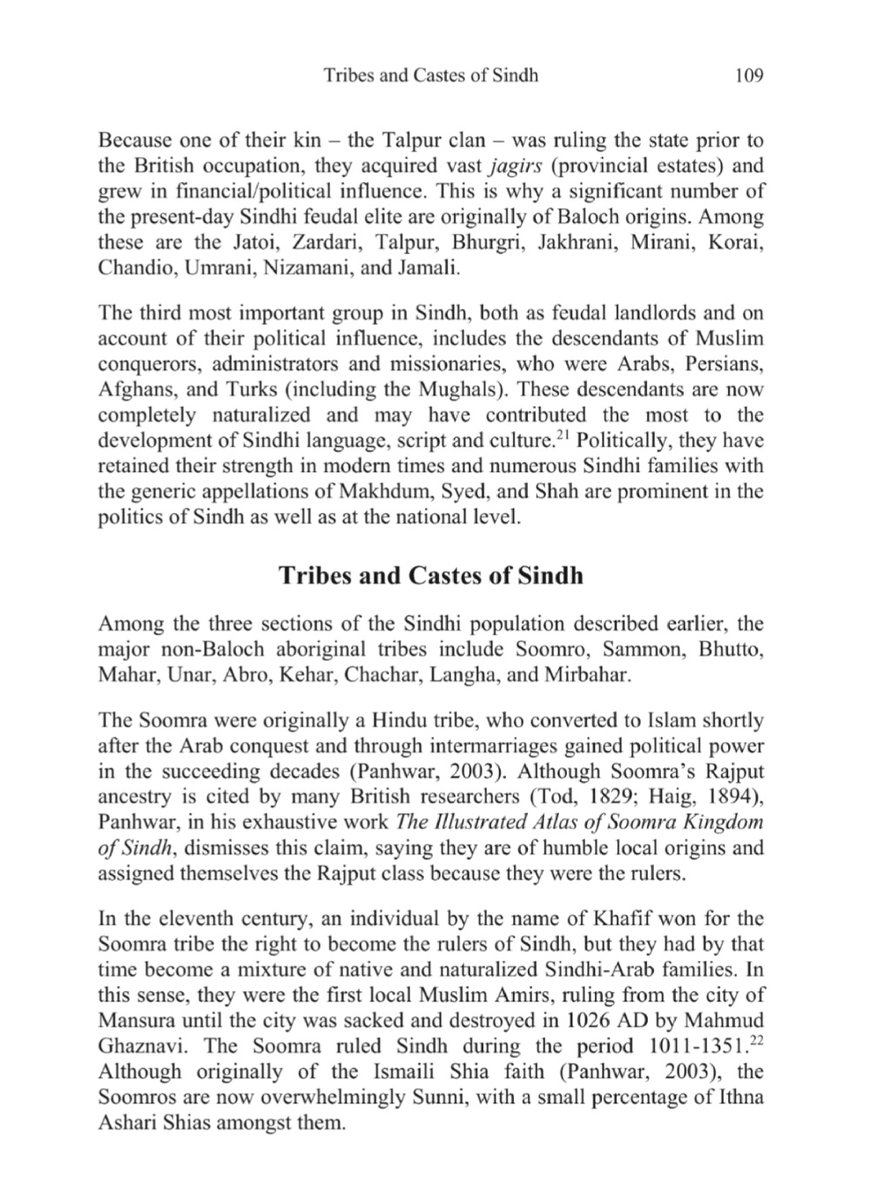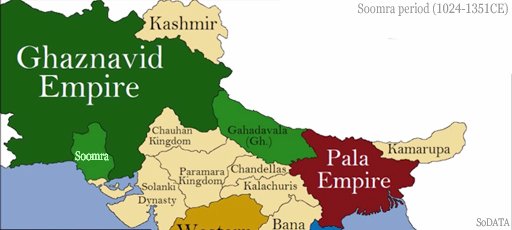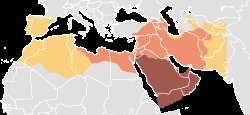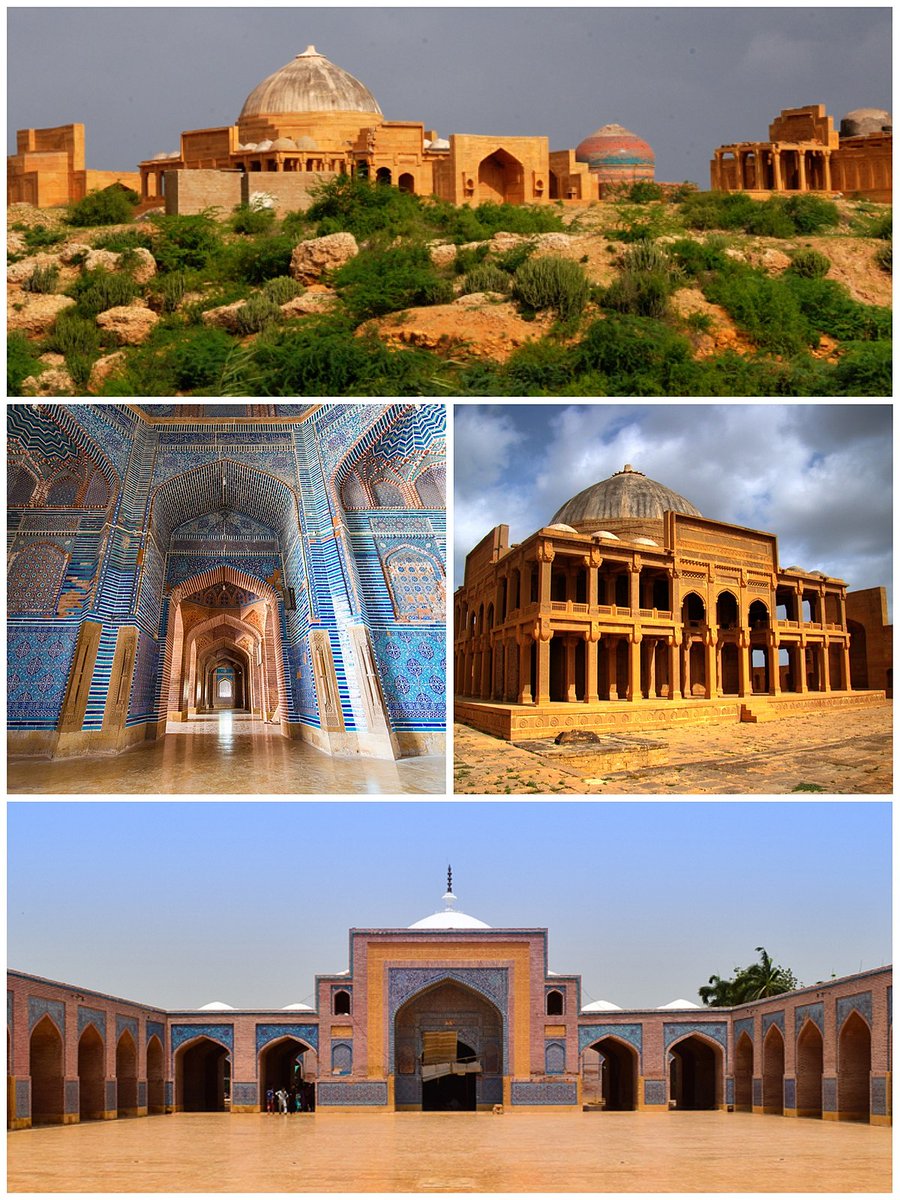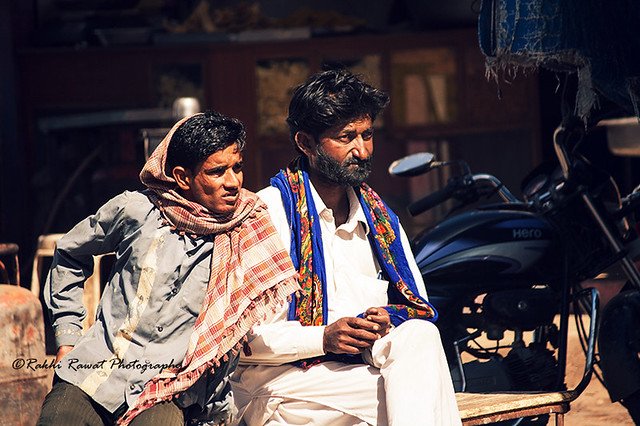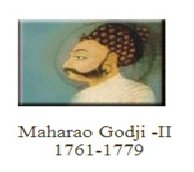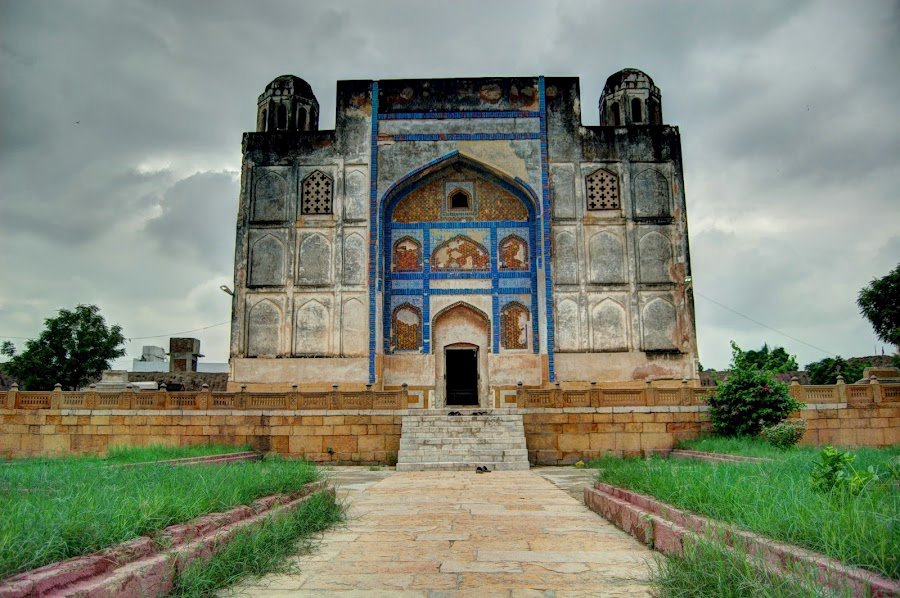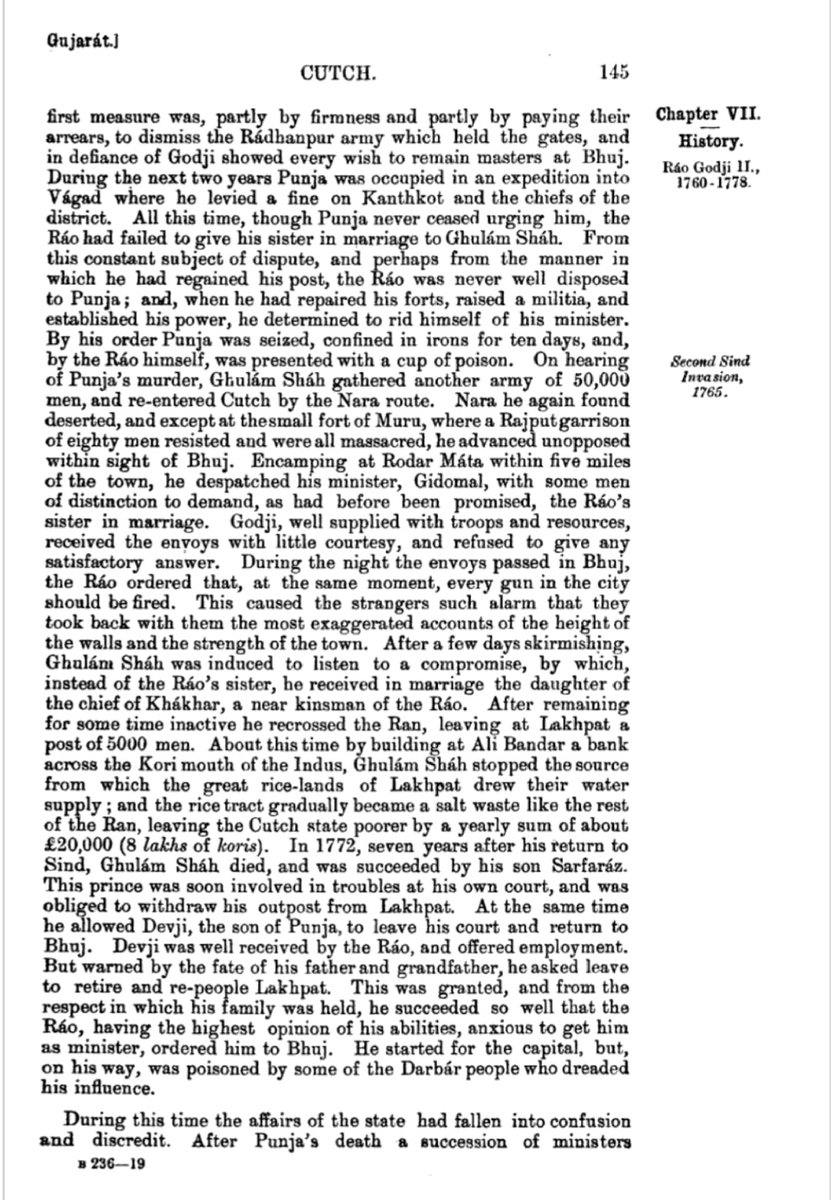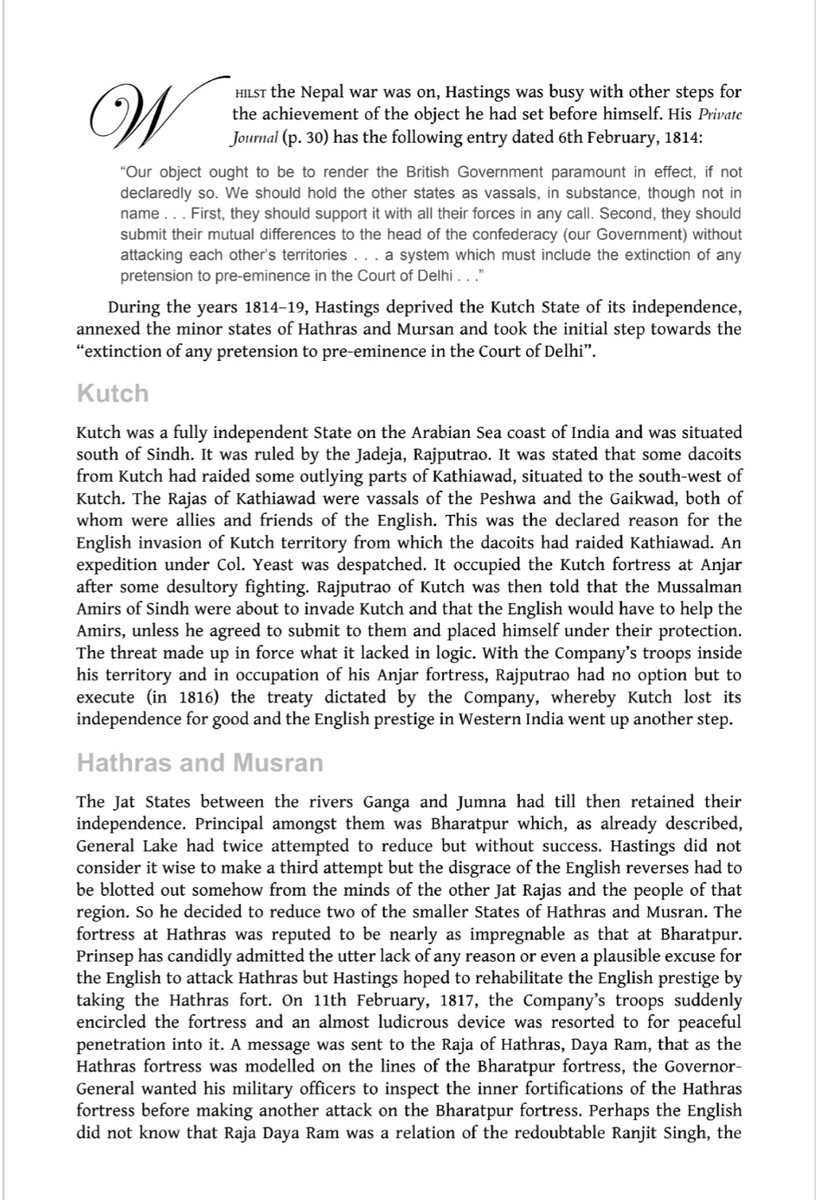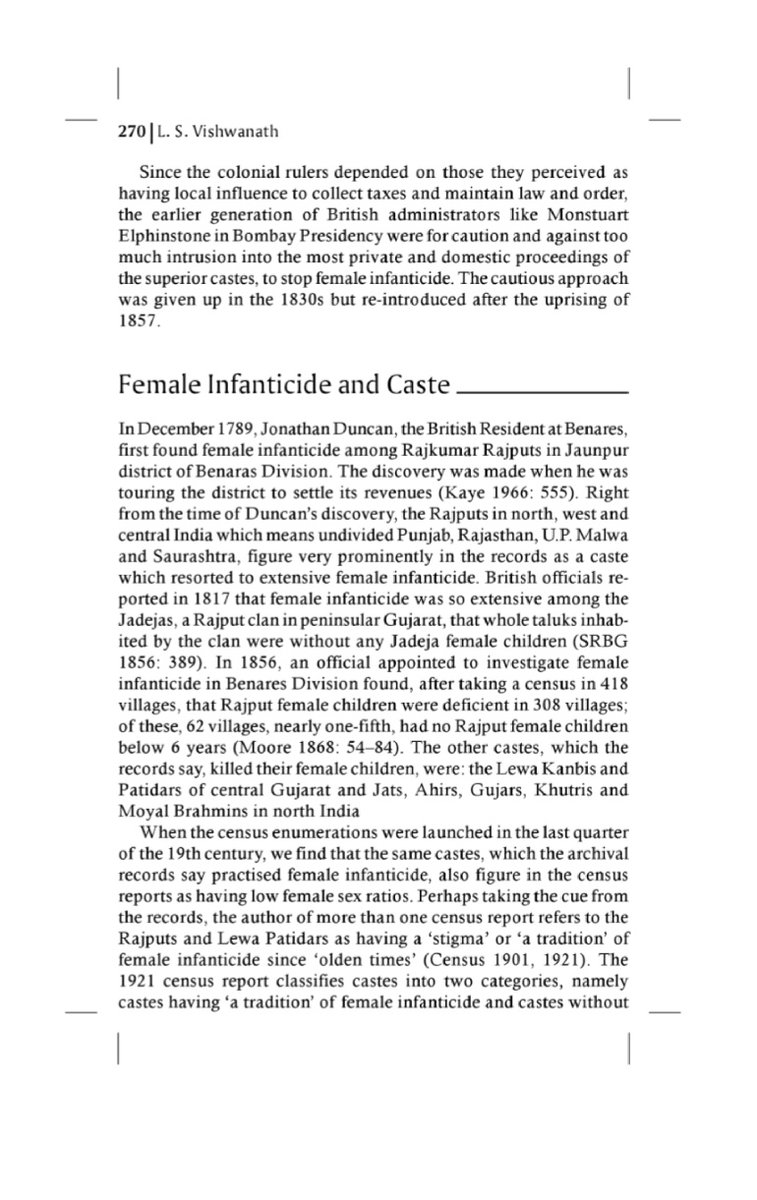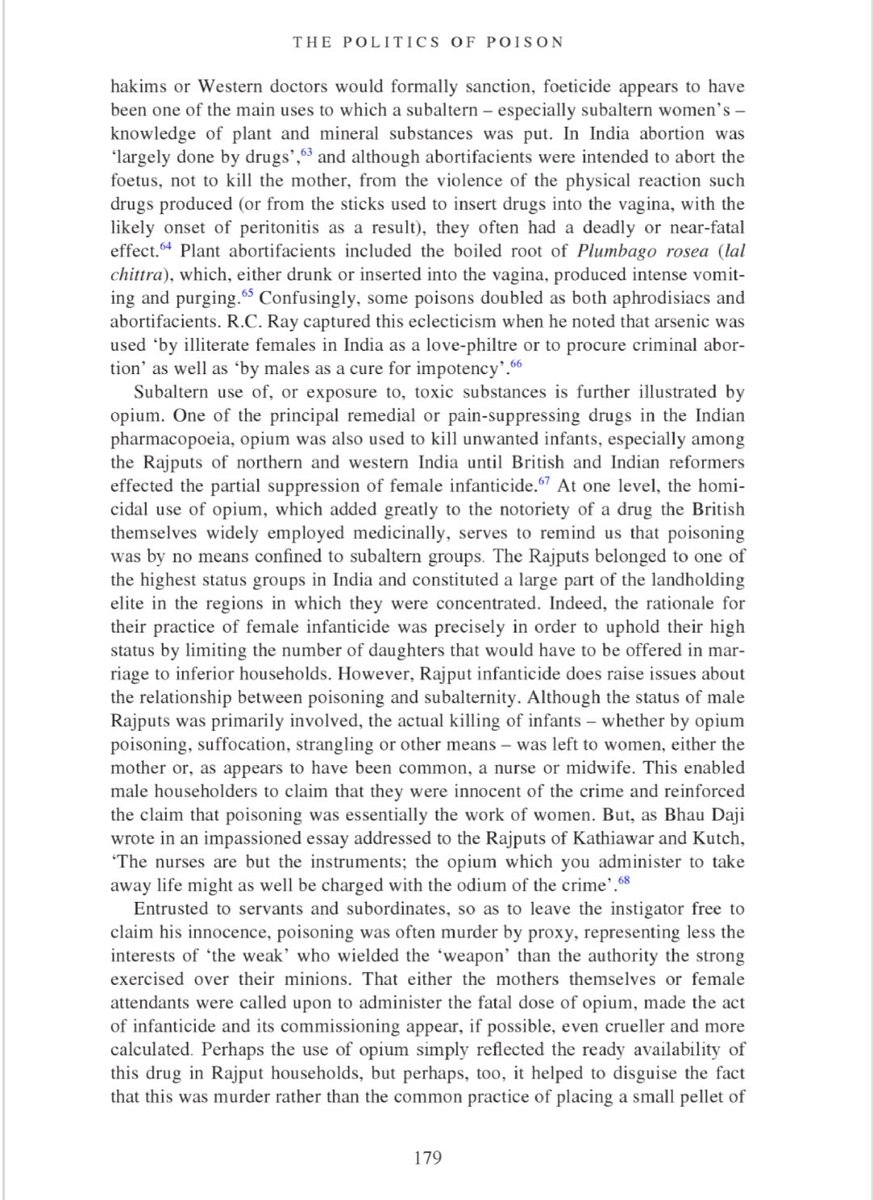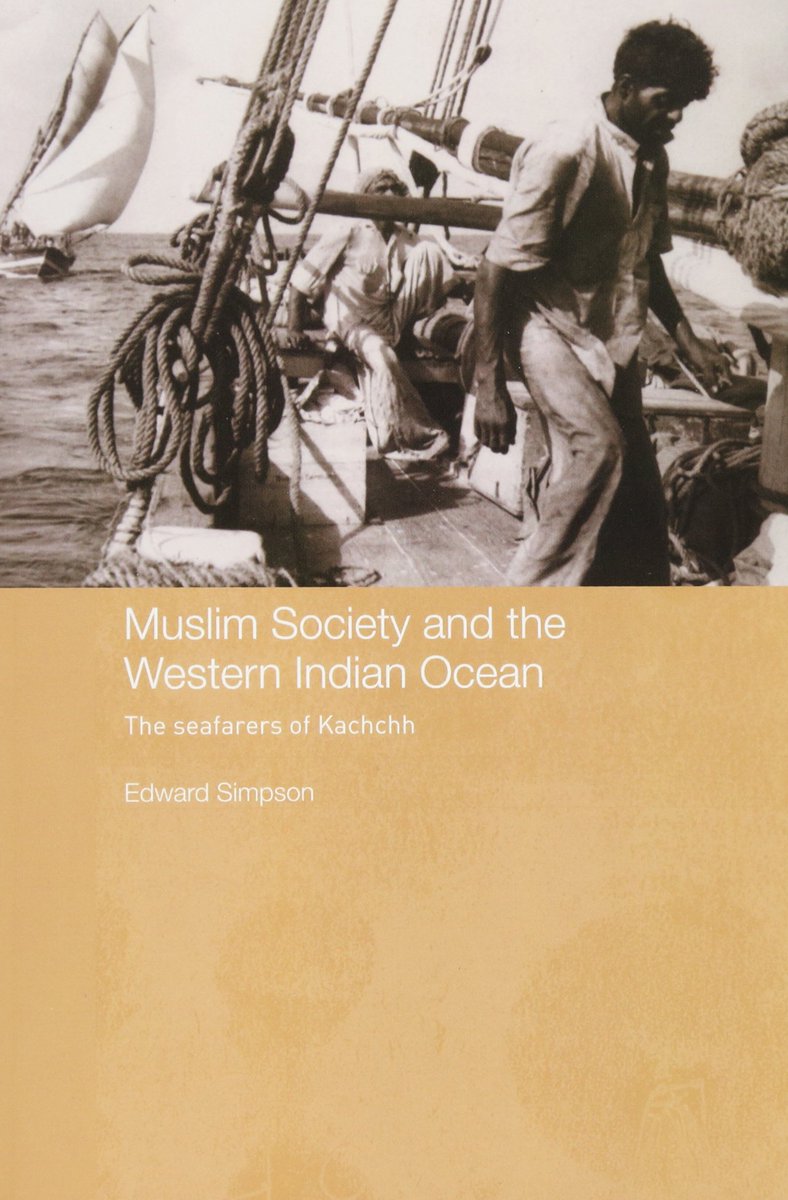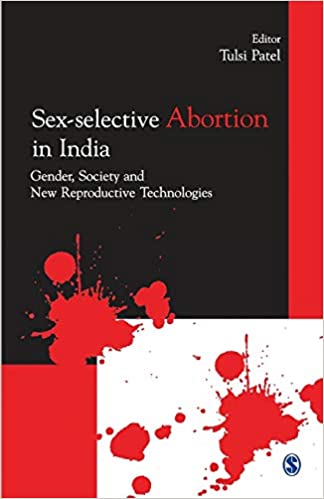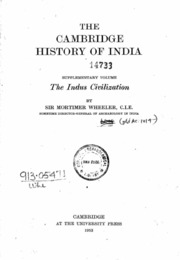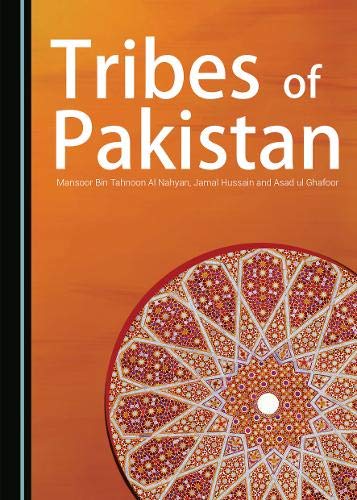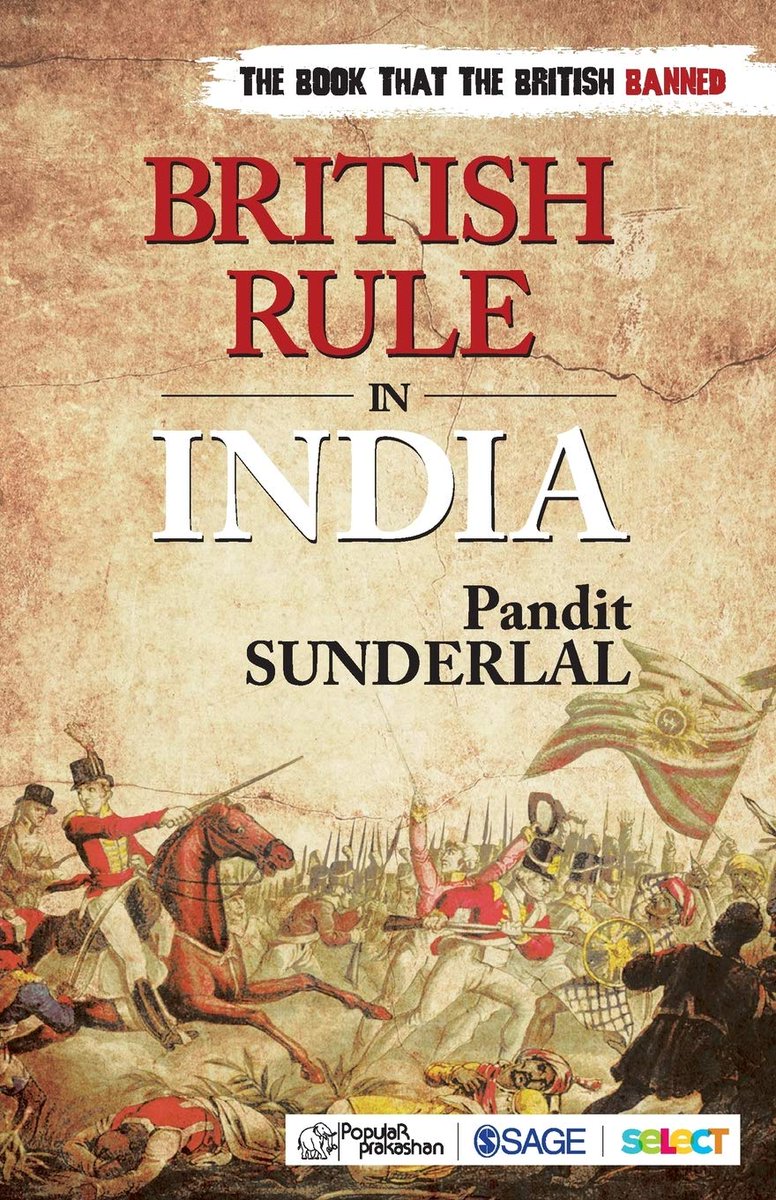[QUICK THREAD: THE JADEJAS]
1/63
Muslims took much from India, but they also brought much. One of those gifts was opium. From toothache to gonorrhoea and from cholera to male impotency, this thing was closest you could get to panacea back in the day.
1/63
Muslims took much from India, but they also brought much. One of those gifts was opium. From toothache to gonorrhoea and from cholera to male impotency, this thing was closest you could get to panacea back in the day.
2/63
Besides being an excellent analgesic (we still use morphine to kill severe pain), it was also a decent aphrodisiac and the mediaeval world& #39;s most sought-after date rape drug. But the latter wasn& #39;t exactly its most sinister application. That goes to something else.
Murder.
Besides being an excellent analgesic (we still use morphine to kill severe pain), it was also a decent aphrodisiac and the mediaeval world& #39;s most sought-after date rape drug. But the latter wasn& #39;t exactly its most sinister application. That goes to something else.
Murder.
3/63
These were no ordinary murders because these weren& #39;t seen as crime, at least not at first.
Going further back...
Sure Afghans introduced us to opium. But not to opioids. That stuff predates them, and even Islam, by centuries if not millennia.
These were no ordinary murders because these weren& #39;t seen as crime, at least not at first.
Going further back...
Sure Afghans introduced us to opium. But not to opioids. That stuff predates them, and even Islam, by centuries if not millennia.
4/63
From the necromancers of Tenochtitlan to the shamans of the Andes, one subtropical vespertine flower had long served as the staple hallucinogen for man and god alike. The Nahuatl-speaking Aztecs called it tolohuaxihuitl. To modern Mexicans, it& #39;s a much simpler toloache.
From the necromancers of Tenochtitlan to the shamans of the Andes, one subtropical vespertine flower had long served as the staple hallucinogen for man and god alike. The Nahuatl-speaking Aztecs called it tolohuaxihuitl. To modern Mexicans, it& #39;s a much simpler toloache.
5/63
Not sure when well before 200 AD, the plant made its way into India, possibly via traders. That& #39;s when Suśruta recorded it as a wonderdrug in probably the earliest medical treatise on the subcontinent.
He called it Datura.
http://lib.unipune.ac.in:8080/xmlui/bitstream/handle/123456789/2275/08_chapter%202.pdf?sequence=8&isAllowed=y"> http://lib.unipune.ac.in:8080/xmlui/bitstream/handle/123456789/2275/08_chapter%202.pdf?sequence=8&isAllowed=y
https://nph.onlinelibrary.wiley.com/doi/full/10.1111/nph.13300">https://nph.onlinelibrary.wiley.com/doi/full/...
Not sure when well before 200 AD, the plant made its way into India, possibly via traders. That& #39;s when Suśruta recorded it as a wonderdrug in probably the earliest medical treatise on the subcontinent.
He called it Datura.
http://lib.unipune.ac.in:8080/xmlui/bitstream/handle/123456789/2275/08_chapter%202.pdf?sequence=8&isAllowed=y"> http://lib.unipune.ac.in:8080/xmlui/bitstream/handle/123456789/2275/08_chapter%202.pdf?sequence=8&isAllowed=y
https://nph.onlinelibrary.wiley.com/doi/full/10.1111/nph.13300">https://nph.onlinelibrary.wiley.com/doi/full/...
6/63
For centuries, datura remained the mainstay in treatments of all kinds of ailments, from cholera to pox to impotency to diarrhoea. Until the Rajputs found a new ingenious application of their own:
Murder.
Murder of babies, to be precise.
For centuries, datura remained the mainstay in treatments of all kinds of ailments, from cholera to pox to impotency to diarrhoea. Until the Rajputs found a new ingenious application of their own:
Murder.
Murder of babies, to be precise.
7/63
Medieval India has mostly treated its women poorly, that& #39;s a no-brainer. Daughters were (often still are) frowned upon. At best they cost dowry; at worst, they get raped and cost family "honor." So not having one made sense to many parents.
Medieval India has mostly treated its women poorly, that& #39;s a no-brainer. Daughters were (often still are) frowned upon. At best they cost dowry; at worst, they get raped and cost family "honor." So not having one made sense to many parents.
8/63
The one community it made the most sense to was also the one most pathologically obsessed with...honor. Solution?
Female infanticide.
And datura extract was the toxin of choice. Even after the introduction of opium, datura held fort in this application.
The one community it made the most sense to was also the one most pathologically obsessed with...honor. Solution?
Female infanticide.
And datura extract was the toxin of choice. Even after the introduction of opium, datura held fort in this application.
9/63
The first time such a practice came to light was in Dec 1789 when a Jonathan Duncan, a British resident at Benaras, was on a revenue-settlement tour of his district and learned of female infanticide among Rajkumar Rajputs of Jaunpur.
He was just scratching the surface.
The first time such a practice came to light was in Dec 1789 when a Jonathan Duncan, a British resident at Benaras, was on a revenue-settlement tour of his district and learned of female infanticide among Rajkumar Rajputs of Jaunpur.
He was just scratching the surface.
10/63
By 1817, the grotesque practice had been extensively documented in all of West India. Pioneering the efforts was one Rajput clan from peninsular Gujarat. There were entire talukas inhabited by this clan with zero female children.
The Jadejas.
https://www.jstor.org/stable/4406753 ">https://www.jstor.org/stable/44...
By 1817, the grotesque practice had been extensively documented in all of West India. Pioneering the efforts was one Rajput clan from peninsular Gujarat. There were entire talukas inhabited by this clan with zero female children.
The Jadejas.
https://www.jstor.org/stable/4406753 ">https://www.jstor.org/stable/44...
11/63
Now, the Jadejas are a curious bunch and deserve a glaring spotlight in a conversation about the rajputs for more reasons than one. Lemme tell you a story.
Once upon a time in the Kutch of Gujarat, lived 2 brothers, Jam Lakhoji and Jam Hamirji.
Now, the Jadejas are a curious bunch and deserve a glaring spotlight in a conversation about the rajputs for more reasons than one. Lemme tell you a story.
Once upon a time in the Kutch of Gujarat, lived 2 brothers, Jam Lakhoji and Jam Hamirji.
12/63
We& #39;re talking pre-Babur days here. The two siblings ruled two separate Kutch territories, Tera and Lakhiarviro, respectively. One day, Jam Lakhoji was murdered by a clansman at the behest of elder brother, Hamirji. Don& #39;t shriek, patricide was commonplace those days.
We& #39;re talking pre-Babur days here. The two siblings ruled two separate Kutch territories, Tera and Lakhiarviro, respectively. One day, Jam Lakhoji was murdered by a clansman at the behest of elder brother, Hamirji. Don& #39;t shriek, patricide was commonplace those days.
13/63
Now Lakhoji had a son. Jam Raval. To avenge daddy& #39;s murder, Raval killed uncle Hamirji. This was 1524. The revenge involved a massacre. One a young Khengarji I, Hamirji& #39;s boy, narrowly escaped. For the next 24 years, Jam Raval ruled Kutch uninterrupted.
Now Lakhoji had a son. Jam Raval. To avenge daddy& #39;s murder, Raval killed uncle Hamirji. This was 1524. The revenge involved a massacre. One a young Khengarji I, Hamirji& #39;s boy, narrowly escaped. For the next 24 years, Jam Raval ruled Kutch uninterrupted.
14/63
About 250 miles away in Ahmedabad, young Khengarji worked his way up the ranks as the prodigious asylee in the emperor& #39;s army and rose from a mere foot soldier to a vassal ruler of Morbi.
In 14 years flat.
All thanks to the guardian angel who granted him asylum.
About 250 miles away in Ahmedabad, young Khengarji worked his way up the ranks as the prodigious asylee in the emperor& #39;s army and rose from a mere foot soldier to a vassal ruler of Morbi.
In 14 years flat.
All thanks to the guardian angel who granted him asylum.
15/63
By 1548, Khengarji was on the Kutch throne, having unseated his cousin and scored his revenge. But not without help from two powerful armies — His guardian angel& #39;s, and his guardian angel& #39;s friend& #39;s.
Jam Raval escaped to Saurashtra and founded Nawanagar, today& #39;s Jamnagar.
By 1548, Khengarji was on the Kutch throne, having unseated his cousin and scored his revenge. But not without help from two powerful armies — His guardian angel& #39;s, and his guardian angel& #39;s friend& #39;s.
Jam Raval escaped to Saurashtra and founded Nawanagar, today& #39;s Jamnagar.
16/63
Once on the throne, Khengarji assumed a new title, Rao. The following year was spent integrating the 14 landowning dynasties (12 Jadejas and 2 Waghelas) of Kutch into his fold turning Kutch into a single unified monolith for the first time with capital in Bhuj.
Once on the throne, Khengarji assumed a new title, Rao. The following year was spent integrating the 14 landowning dynasties (12 Jadejas and 2 Waghelas) of Kutch into his fold turning Kutch into a single unified monolith for the first time with capital in Bhuj.
17/63
So this is how the Jadejas came to rule peninsular Gujarat. Khengarji and his family tree, all Jadejas. The tree itself didn& #39;t start with Khengarji or his dad though, that story goes back another 400 years, but more on that a little later.
So this is how the Jadejas came to rule peninsular Gujarat. Khengarji and his family tree, all Jadejas. The tree itself didn& #39;t start with Khengarji or his dad though, that story goes back another 400 years, but more on that a little later.
18/63
So far we& #39;ve just examined 2 Jadeja generations and witnessed one patricide and two near-fratricides. Now killing kins for power isn& #39;t something new here, Ashoka showed the way over a millennium ago, but now we know the Jadejas weren& #39;t kosher on that count either.
So far we& #39;ve just examined 2 Jadeja generations and witnessed one patricide and two near-fratricides. Now killing kins for power isn& #39;t something new here, Ashoka showed the way over a millennium ago, but now we know the Jadejas weren& #39;t kosher on that count either.
19/63
And of course, there& #39;s the enthusiastic spearheading of female infanticide as well.
Two keywords underscore every perception of the rajput legacy — chivalry and valor. We just saw chivalry.
Now we& #39;ll see valor.
And of course, there& #39;s the enthusiastic spearheading of female infanticide as well.
Two keywords underscore every perception of the rajput legacy — chivalry and valor. We just saw chivalry.
Now we& #39;ll see valor.
20/63
Remember Khengarji& #39;s "guardian angel" in Ahmedabad. Well, that was Sultan Mahmud Shah I.
Gujarat Sultanate.
It& #39;s the Sultan& #39;s grace that scored Khengarji first an asylum, then a job, and finally the fiefdom to Morbi. Without this Muslim& #39;s help he& #39;d be long dead.
Remember Khengarji& #39;s "guardian angel" in Ahmedabad. Well, that was Sultan Mahmud Shah I.
Gujarat Sultanate.
It& #39;s the Sultan& #39;s grace that scored Khengarji first an asylum, then a job, and finally the fiefdom to Morbi. Without this Muslim& #39;s help he& #39;d be long dead.
21/63
And when it was time to march on his cousin in Kutch, Khengarji still couldn& #39;t imagine the campaign without help. Help from not one but 2 Muslim houses — The Gujarat Sultanate, and the Mughal.
Now try imagining the Jadeja house of cards without Muslim help.
And when it was time to march on his cousin in Kutch, Khengarji still couldn& #39;t imagine the campaign without help. Help from not one but 2 Muslim houses — The Gujarat Sultanate, and the Mughal.
Now try imagining the Jadeja house of cards without Muslim help.
22/63
So that& #39;s Jadeja valor for you. Seeking help from "invaders" to march on your own kins.
But that& #39;s not all. Remember I said the clan didn& #39;t start with Khengarji or his dad and that the story goes back another 400 years?
Let& #39;s go to Sind.
So that& #39;s Jadeja valor for you. Seeking help from "invaders" to march on your own kins.
But that& #39;s not all. Remember I said the clan didn& #39;t start with Khengarji or his dad and that the story goes back another 400 years?
Let& #39;s go to Sind.
23/63
In the decades following the Prophet& #39;s death, the Islamic world was torn in a power struggle of its own. There were 3 major centers of gravity in the Muslim realm — Umayyads of Damascus, Abbasids of Baghdad, and Fatimids of Cairo. The rivalry was fierce and often bloody.
In the decades following the Prophet& #39;s death, the Islamic world was torn in a power struggle of its own. There were 3 major centers of gravity in the Muslim realm — Umayyads of Damascus, Abbasids of Baghdad, and Fatimids of Cairo. The rivalry was fierce and often bloody.
24/63
Both intended to expand eastward for reasons enshrined in some of the hadiths as ghazwa al-hind. The authenticity of those hadiths and their interpretations is a whole other debate.
Here, we& #39;ll just concern ourselves with Sindh.
https://wikiislam.net/wiki/Ghazwa-e-hind">https://wikiislam.net/wiki/Ghaz...
Both intended to expand eastward for reasons enshrined in some of the hadiths as ghazwa al-hind. The authenticity of those hadiths and their interpretations is a whole other debate.
Here, we& #39;ll just concern ourselves with Sindh.
https://wikiislam.net/wiki/Ghazwa-e-hind">https://wikiislam.net/wiki/Ghaz...
25/63
Mohammad died in 632 AD. Less than 80 years later, the Umayyads were in Sindh. The ruler was Muhammad Bin Qasim and his was the first Arab rule on the subcontinent. Starting 711, Sindh was an Umayyad vassal.
But only until 750, when the Abbasids entered the scene.
Mohammad died in 632 AD. Less than 80 years later, the Umayyads were in Sindh. The ruler was Muhammad Bin Qasim and his was the first Arab rule on the subcontinent. Starting 711, Sindh was an Umayyad vassal.
But only until 750, when the Abbasids entered the scene.
26/63
Initially, the Abbasids allowed Sindh significant autonomy under the Habbari dynasty, a lineage of Arab rulers that pledged allegiance to Baghdad.
This change in the year 1010 with the advent of an Abbasid-friendly warlord from Afghanistan.
Mahmud Ghaznavi.
Initially, the Abbasids allowed Sindh significant autonomy under the Habbari dynasty, a lineage of Arab rulers that pledged allegiance to Baghdad.
This change in the year 1010 with the advent of an Abbasid-friendly warlord from Afghanistan.
Mahmud Ghaznavi.
27/63
Ghaznavi ended the Habbari rule; Sindh was now a Turko-Afghan territory.
But this arrangement didn& #39;t last very long and in less than 2 decades, the region witnessed the exit of the Ghaznavids, and the quiet and swift emergence of a local power, the Soomro.
Ghaznavi ended the Habbari rule; Sindh was now a Turko-Afghan territory.
But this arrangement didn& #39;t last very long and in less than 2 decades, the region witnessed the exit of the Ghaznavids, and the quiet and swift emergence of a local power, the Soomro.
28/63
Soomro is a tribe of rajputs (some say, Parmar rajputs) indigenous to Sindh. When the Arabs came, members of this rajput tribe were some of the first to embrace Islam. Sure they would& #39;ve put up a fight first, but not much on record corroborates that.
Soomro is a tribe of rajputs (some say, Parmar rajputs) indigenous to Sindh. When the Arabs came, members of this rajput tribe were some of the first to embrace Islam. Sure they would& #39;ve put up a fight first, but not much on record corroborates that.
29/63
The weakening of the Umayyads and the Abbasids in Sindh opened a rare window of opportunity to the Soomro to reclaim their hegemony, one they promptly grabbed and established the Soomra dynasty. This dynasty lasted over 300 years.
All ex-Rajput Muslim rulers.
The weakening of the Umayyads and the Abbasids in Sindh opened a rare window of opportunity to the Soomro to reclaim their hegemony, one they promptly grabbed and established the Soomra dynasty. This dynasty lasted over 300 years.
All ex-Rajput Muslim rulers.
30/63
Under the Soomro, Sindh became vassal to a third actor in the post-Mohammad power struggle, the Fatimids. Under the Fatimids, much of Soomra territory had converted to Isma& #39;ilism, a Shi& #39;a subsect. Some still remained Hindu but those were far and few in between.
Under the Soomro, Sindh became vassal to a third actor in the post-Mohammad power struggle, the Fatimids. Under the Fatimids, much of Soomra territory had converted to Isma& #39;ilism, a Shi& #39;a subsect. Some still remained Hindu but those were far and few in between.
31/63
By mid-1300, the Soomra rule came to an end after Sindh was swallowed into the Delhi Sultanate by Ali Gurshasp, better known as Alauddin Khalji.
Over the next 100 years, Sindh switched several hands, from the Khaljis to the Tughlaqs to the Sayyids.
By mid-1300, the Soomra rule came to an end after Sindh was swallowed into the Delhi Sultanate by Ali Gurshasp, better known as Alauddin Khalji.
Over the next 100 years, Sindh switched several hands, from the Khaljis to the Tughlaqs to the Sayyids.
32/63
At this point, let& #39;s take another quick rewind. Back to when Sindh reported to Baghdad. The late 700s. Although the region was under the Habbaris, there was a tiny pocket of rajput autonomy within.
Nagar Thatta.
The principality was ruled by a Lakho Ghuraro.
At this point, let& #39;s take another quick rewind. Back to when Sindh reported to Baghdad. The late 700s. Although the region was under the Habbaris, there was a tiny pocket of rajput autonomy within.
Nagar Thatta.
The principality was ruled by a Lakho Ghuraro.
33/63
Lakho Ghuraro was member of a Sindhi rajput tribe called the Samma. Today, almost all remaining Sammas in Sindh are Muslims but back in the day, they were still Hindu Rajputs.
So Lakho Ghuraro was subservient to the Habbaris who were subservient to the Abbasid.
Lakho Ghuraro was member of a Sindhi rajput tribe called the Samma. Today, almost all remaining Sammas in Sindh are Muslims but back in the day, they were still Hindu Rajputs.
So Lakho Ghuraro was subservient to the Habbaris who were subservient to the Abbasid.
34/63
Ghuraro had 8 boys, Unad being the eldest. Among others were Mod and Manai. When Ghuraro died, Unad took the "throne" but this didn& #39;t go down well will Mod and Manai. The latter were upset.
So upset they tried to have the new prince, their own brother, killed.
Ghuraro had 8 boys, Unad being the eldest. Among others were Mod and Manai. When Ghuraro died, Unad took the "throne" but this didn& #39;t go down well will Mod and Manai. The latter were upset.
So upset they tried to have the new prince, their own brother, killed.
35/63
Unfortunately, they failed and had to flee.
To Kutch.
This marks the Sammas& #39; entry into Gujarat, Kutch in particular. Why this is important? We& #39;ll learn soon but for now, just make note of the fact that this tribe was not native to Kutch or even Gujarat.
Unfortunately, they failed and had to flee.
To Kutch.
This marks the Sammas& #39; entry into Gujarat, Kutch in particular. Why this is important? We& #39;ll learn soon but for now, just make note of the fact that this tribe was not native to Kutch or even Gujarat.
36/63
Eastern Kutch those days was under Vagham Chavda, chief of a local rajput clan related to the Sammas of Sindh. In fact, Vagham was Mod& #39;s maternal uncle. This made Eastern Kutch the most obvious choice of asylum for Mod, a favor he was readily extended.
Eastern Kutch those days was under Vagham Chavda, chief of a local rajput clan related to the Sammas of Sindh. In fact, Vagham was Mod& #39;s maternal uncle. This made Eastern Kutch the most obvious choice of asylum for Mod, a favor he was readily extended.
37/63
Guess how the chivalrous nephew repaid his welcome though.
Let& #39;s just say, Vagham Chavda didn& #39;t last long and his throne fell into the backstabbing nephew& #39;s lap. This marks the beginning of Samma rule in Kutch.
And a saga of power struggle soaked in family blood.
Guess how the chivalrous nephew repaid his welcome though.
Let& #39;s just say, Vagham Chavda didn& #39;t last long and his throne fell into the backstabbing nephew& #39;s lap. This marks the beginning of Samma rule in Kutch.
And a saga of power struggle soaked in family blood.
38/63
Back in Sindh, Jam Unad& #39;s line of succession almost ended with Jam Jada by the 12th century. I say "ended" because Jam Jada& #39;s wife didn& #39;t bear a boy at first, so he had to adopt his nephew. I say "almost" because later she did. Now there were 2 successors.
Back in Sindh, Jam Unad& #39;s line of succession almost ended with Jam Jada by the 12th century. I say "ended" because Jam Jada& #39;s wife didn& #39;t bear a boy at first, so he had to adopt his nephew. I say "almost" because later she did. Now there were 2 successors.
39/63
The adopted boy was Lakho; the biological, Ghao. As expected, Jam Jada& #39;s death meant Ghao landed the throne and Lakho, exile.
This exile brought Lakho Jadani to Kutch. Jadani because he was Jada& #39;s boy, even if adopted.
This Sindhi refugee is key to our story.
The adopted boy was Lakho; the biological, Ghao. As expected, Jam Jada& #39;s death meant Ghao landed the throne and Lakho, exile.
This exile brought Lakho Jadani to Kutch. Jadani because he was Jada& #39;s boy, even if adopted.
This Sindhi refugee is key to our story.
40/63
Lakho wasn& #39;t alone, he had his twin brother Lakhiar with him. With time and treachery, the twin managed to wrest Eastern Kutch from the Chavdas (or, Mod& #39;s descendents?). Such treachery seems to have been a running theme in this bloodline.
Lakho wasn& #39;t alone, he had his twin brother Lakhiar with him. With time and treachery, the twin managed to wrest Eastern Kutch from the Chavdas (or, Mod& #39;s descendents?). Such treachery seems to have been a running theme in this bloodline.
41/63
By 1147, Lakho Jadani had established capital at Lakhiarviro, a newly-settled town in Eastern Kutch that he named after his twin brother, Lakhiar.
Remember I said this Sindhi refugee is key to our story?
Well that& #39;s because he& #39;s the first Jadeja in history.
By 1147, Lakho Jadani had established capital at Lakhiarviro, a newly-settled town in Eastern Kutch that he named after his twin brother, Lakhiar.
Remember I said this Sindhi refugee is key to our story?
Well that& #39;s because he& #39;s the first Jadeja in history.
42/63
Lakho was called Jadani because he was Jam Jada& #39;s boy. Jadani means Jada& #39;s in Gujarati. And for the exact same reason, his descendents came to be called Jadeja. The term is Sindhi/Kutchi for Jada& #39;s.
So this is really where the Jadeja story begins.
Lakho was called Jadani because he was Jam Jada& #39;s boy. Jadani means Jada& #39;s in Gujarati. And for the exact same reason, his descendents came to be called Jadeja. The term is Sindhi/Kutchi for Jada& #39;s.
So this is really where the Jadeja story begins.
43/63
Does Lakhiarviro ring a bell? If so, it& #39;s probably because 4 centuries later it& #39;d be the site of a Jam Lakhoji& #39;s fratricide.
Also, does the word "Jam" intrigue? At least since Unad, the word seems to be part of every Samma prince& #39;s name. A title of sorts?
Does Lakhiarviro ring a bell? If so, it& #39;s probably because 4 centuries later it& #39;d be the site of a Jam Lakhoji& #39;s fratricide.
Also, does the word "Jam" intrigue? At least since Unad, the word seems to be part of every Samma prince& #39;s name. A title of sorts?
44/63
That& #39;s because it is. Jam is the Sindhi equivalent of Chaudhary, a title of nobility.
Moving on...
So far we& #39;ve seen eager Islamization, backstabbing refugees, patricides, fratricides, and female infanticide. But the story of rajput chivalry and valor isn& #39;t over yet.
That& #39;s because it is. Jam is the Sindhi equivalent of Chaudhary, a title of nobility.
Moving on...
So far we& #39;ve seen eager Islamization, backstabbing refugees, patricides, fratricides, and female infanticide. But the story of rajput chivalry and valor isn& #39;t over yet.
45/63
Fast forward to mid-1700s.
Kutch under Jadeja Rao Godji II.
And Sind under Mian Ghulam Shah Kalhoro, a puppet of the brutal Afghan warlord Ahmed Shah Abdali.
The Kalhoro wanted Kutch and to that end, mounted 2 separate campaigns in a space of 3 years.
Fast forward to mid-1700s.
Kutch under Jadeja Rao Godji II.
And Sind under Mian Ghulam Shah Kalhoro, a puppet of the brutal Afghan warlord Ahmed Shah Abdali.
The Kalhoro wanted Kutch and to that end, mounted 2 separate campaigns in a space of 3 years.
46/63
The 2nd campaign, in 1765, was so humbling that the Jadeja had to sign a truce AND trade a niece in order to retain his territories. Rajputs giving away daughters to victor Muslims as peace offering has been the leitmotif across all stories of conflict in the region.
The 2nd campaign, in 1765, was so humbling that the Jadeja had to sign a truce AND trade a niece in order to retain his territories. Rajputs giving away daughters to victor Muslims as peace offering has been the leitmotif across all stories of conflict in the region.
47/63
Godji was succeeded in 1778 by his son Rayadhan who under the influence of Mohammed Saiyed, a Muslim faqir, converted to Islam.
Sweet.
But dude went overboard and set out to convert everybody in Kutch! He renamed streets and unleashed Pathan fanatics to enforce Islam.
Godji was succeeded in 1778 by his son Rayadhan who under the influence of Mohammed Saiyed, a Muslim faqir, converted to Islam.
Sweet.
But dude went overboard and set out to convert everybody in Kutch! He renamed streets and unleashed Pathan fanatics to enforce Islam.
48/63
This not only brought much humiliation to the pompous Jadeja "pride," it also threw his kingdom in disarray. The forced Islamization triggered a coup.
The coup succeeded and Kutch went under a Fateh Muhamad who immediately put an end to forced conversions.
This not only brought much humiliation to the pompous Jadeja "pride," it also threw his kingdom in disarray. The forced Islamization triggered a coup.
The coup succeeded and Kutch went under a Fateh Muhamad who immediately put an end to forced conversions.
49/63
Fateh Muhamad ran his affairs with grace and class until death in 1813 after which Rayadhan, who& #39;d been under house arrest all this while, was reinstated as the rightful king. The assumption was that 27 years of dispossession would& #39;ve driven some sense into the idiot.
Fateh Muhamad ran his affairs with grace and class until death in 1813 after which Rayadhan, who& #39;d been under house arrest all this while, was reinstated as the rightful king. The assumption was that 27 years of dispossession would& #39;ve driven some sense into the idiot.
50/63
That illusion broke in less than a month and Rao Rayadhan was shown the door once again. The kingdom once again went to a Muslim, this time a Husain Miyan.
2 years later, in came the East India Company and Kutch turned into a British vassal.
That illusion broke in less than a month and Rao Rayadhan was shown the door once again. The kingdom once again went to a Muslim, this time a Husain Miyan.
2 years later, in came the East India Company and Kutch turned into a British vassal.
51/63
The British weren& #39;t alone, by the way. They were aided by another Rajput clan, the Gaekwads. Long story short, the Jadejas were to never regain their sovereignty from here on. Sure, they were a salute state with some autonomy but sovereign, they were not.
The British weren& #39;t alone, by the way. They were aided by another Rajput clan, the Gaekwads. Long story short, the Jadejas were to never regain their sovereignty from here on. Sure, they were a salute state with some autonomy but sovereign, they were not.
52/63
One of the Jadeja kings, the longest reigning, was Khengarji III who even served as the personal secretary to Queen Victoria. When India finally gained independence in 1947, the Jadeja were the first to sign the Instrument of Accession.
http://www.chiefacoins.com/Database/Countries/Kutch.htm">https://www.chiefacoins.com/Database/...
One of the Jadeja kings, the longest reigning, was Khengarji III who even served as the personal secretary to Queen Victoria. When India finally gained independence in 1947, the Jadeja were the first to sign the Instrument of Accession.
http://www.chiefacoins.com/Database/Countries/Kutch.htm">https://www.chiefacoins.com/Database/...
53/63
So this was a very short story of the fabled Jadeja valor.
Like any other story, this one also comes with 3 takeaways:
- Pride
- Shame
- Lesson
Of these, pride and shame are a package deal. You pick one, the other comes with it. Confused?
So this was a very short story of the fabled Jadeja valor.
Like any other story, this one also comes with 3 takeaways:
- Pride
- Shame
- Lesson
Of these, pride and shame are a package deal. You pick one, the other comes with it. Confused?
54/63
The Jadejas have much to be proud of. Their contribution to the Kutch region& #39;s development is unparalleled. Cutch State Railway, Kandla Port, Jamnagar, and overall industrialization of the region owes it all to this one dynasty.
The Jadejas have much to be proud of. Their contribution to the Kutch region& #39;s development is unparalleled. Cutch State Railway, Kandla Port, Jamnagar, and overall industrialization of the region owes it all to this one dynasty.
55/63
There& #39;s enough military and political clout to boast of too. They even beat the Mughals at least once!
But then there& #39;s just as much to be ashamed of too. No medieval dynasty has run its course without skeletons in its closet and this one& #39;s no exception.
There& #39;s enough military and political clout to boast of too. They even beat the Mughals at least once!
But then there& #39;s just as much to be ashamed of too. No medieval dynasty has run its course without skeletons in its closet and this one& #39;s no exception.
56/63
Before we conclude, let& #39;s revisit a gory chapter in this story in the interest of completion.
Female infanticide.
the Jadejas were not alone on the infanticide leaderboard. There were also the Ahirs and the Patidars. All rajputs nevertheless.
Before we conclude, let& #39;s revisit a gory chapter in this story in the interest of completion.
Female infanticide.
the Jadejas were not alone on the infanticide leaderboard. There were also the Ahirs and the Patidars. All rajputs nevertheless.
57/63
One curious aspect of this practice that I forgot to mention earlier is the inherent gender role.
The job almost always belonged to the mother. This immunized the men from any kind of moral encumbrance.
Chivalry.
One curious aspect of this practice that I forgot to mention earlier is the inherent gender role.
The job almost always belonged to the mother. This immunized the men from any kind of moral encumbrance.
Chivalry.
58/63
Is it wise to be ashamed of your ancestors& #39; ethical weaknesses though? Is it wise to bask in the glory of their achievements?
Think.
Because you can& #39;t pick just one. You cannot draw pride and leave shame. That& #39;s why prudence lies in drawing the 3rd takeaway.
Lesson.
Is it wise to be ashamed of your ancestors& #39; ethical weaknesses though? Is it wise to bask in the glory of their achievements?
Think.
Because you can& #39;t pick just one. You cannot draw pride and leave shame. That& #39;s why prudence lies in drawing the 3rd takeaway.
Lesson.
59/63
Every story, including that of the Jadejas, comes pregnant with life lessons. They did good things and they did terrible things. Evolution is all about sifting the two and using the process to calibrate ones moral compass.
Every story, including that of the Jadejas, comes pregnant with life lessons. They did good things and they did terrible things. Evolution is all about sifting the two and using the process to calibrate ones moral compass.
60/63
It& #39;s easy to slather your moustache in pomade, wave swords, and punctuate every communication with a "rajput boy" hashtag, but do know that these are not expressions of chivalry. What they do express is a disturbing amount of complex.
Inferiority complex.
It& #39;s easy to slather your moustache in pomade, wave swords, and punctuate every communication with a "rajput boy" hashtag, but do know that these are not expressions of chivalry. What they do express is a disturbing amount of complex.
Inferiority complex.
61/63
Sources:
- http://www.indianrajputs.com/history/jadeja.php
-">https://www.indianrajputs.com/history/j... Following books:
Sources:
- http://www.indianrajputs.com/history/jadeja.php
-">https://www.indianrajputs.com/history/j... Following books:

 Read on Twitter
Read on Twitter![[QUICK THREAD: THE JADEJAS]1/63Muslims took much from India, but they also brought much. One of those gifts was opium. From toothache to gonorrhoea and from cholera to male impotency, this thing was closest you could get to panacea back in the day. [QUICK THREAD: THE JADEJAS]1/63Muslims took much from India, but they also brought much. One of those gifts was opium. From toothache to gonorrhoea and from cholera to male impotency, this thing was closest you could get to panacea back in the day.](https://pbs.twimg.com/media/Eh3TA9yUcAUes0Q.jpg)

